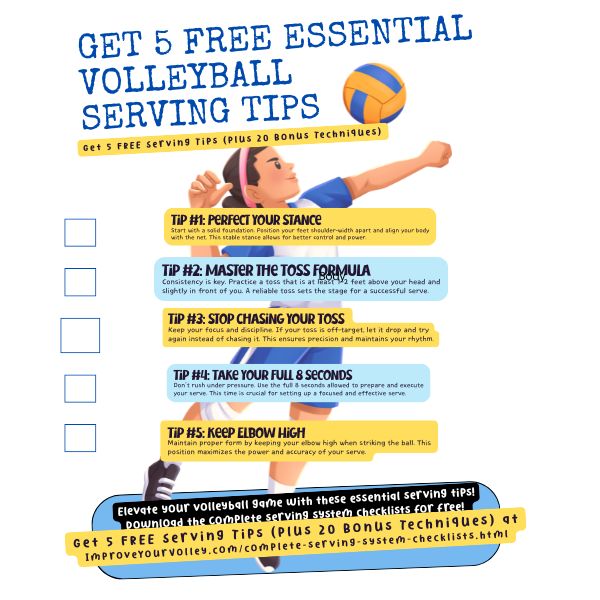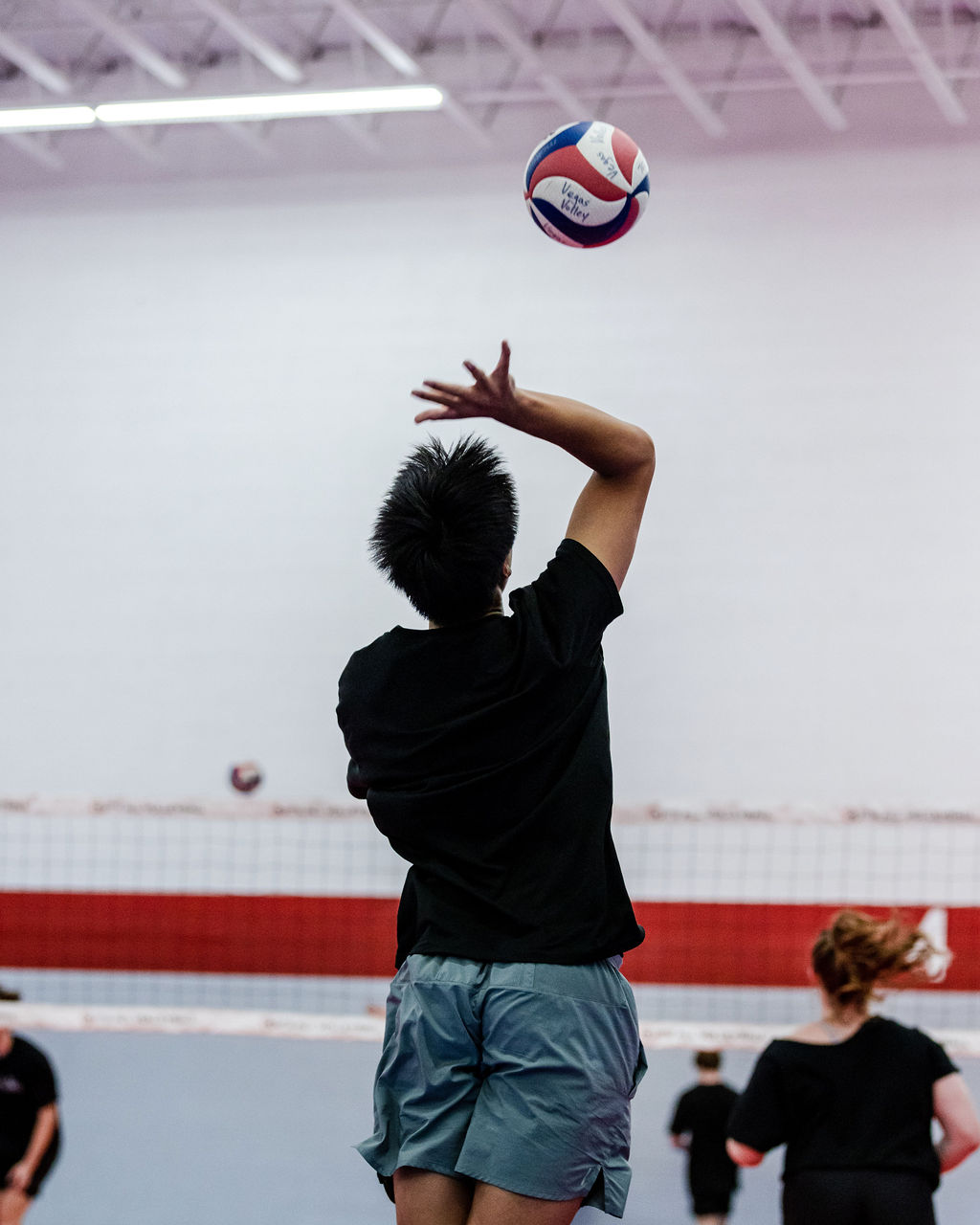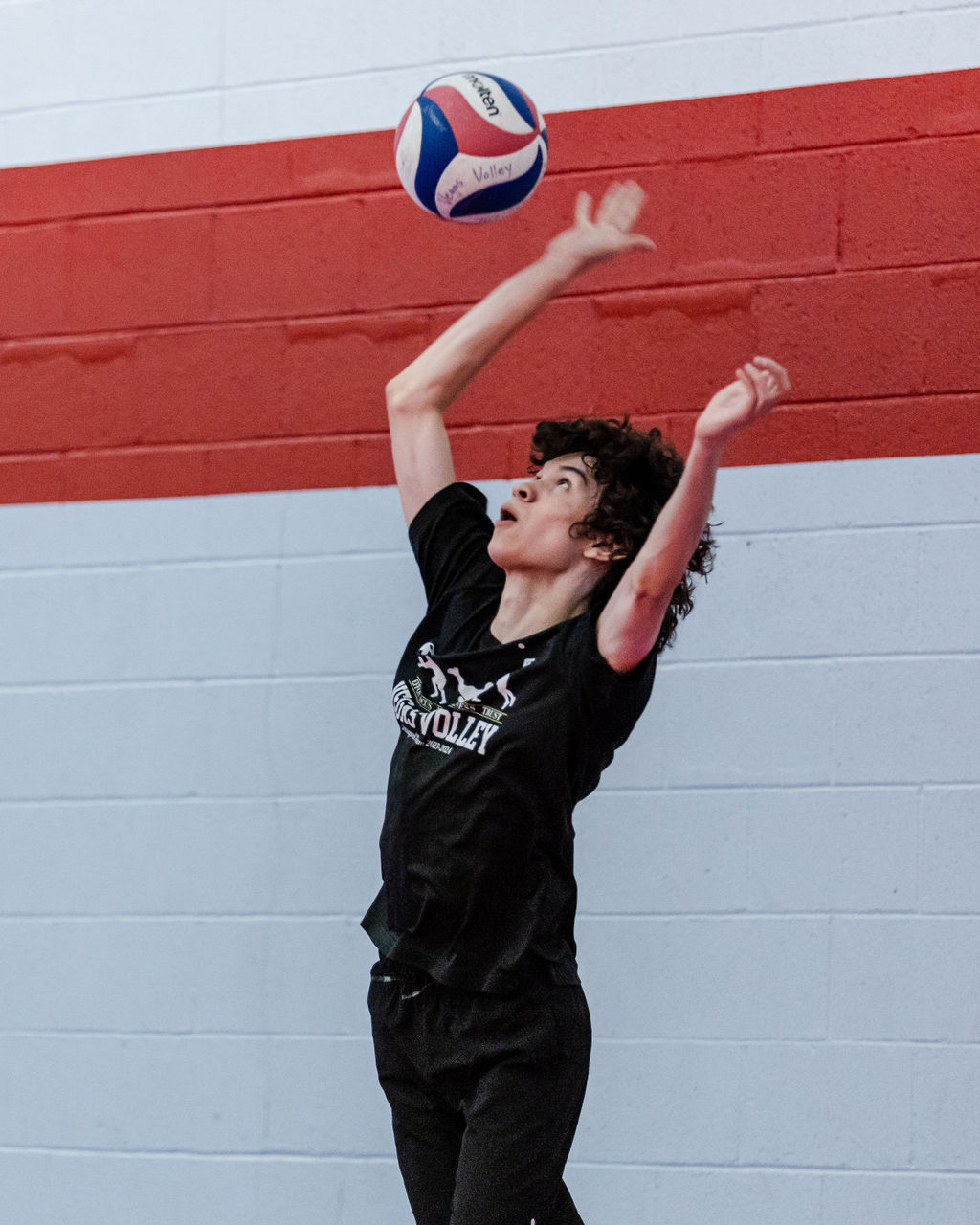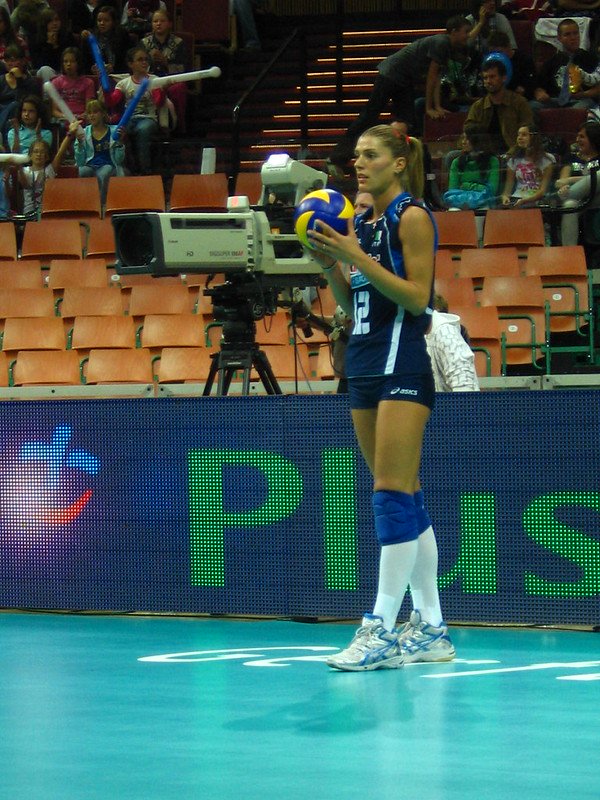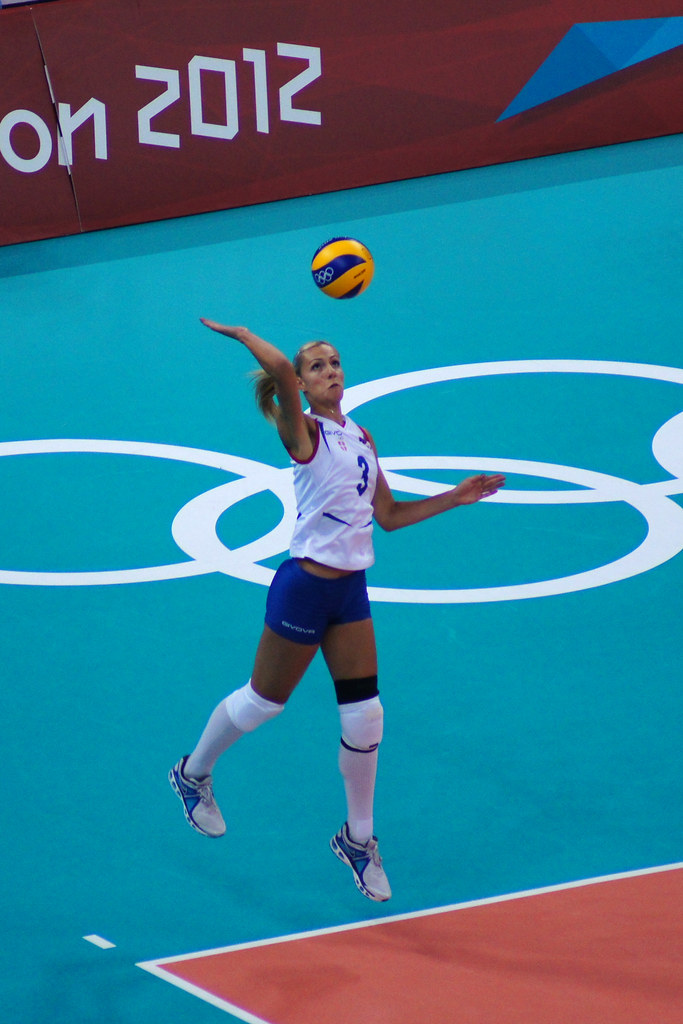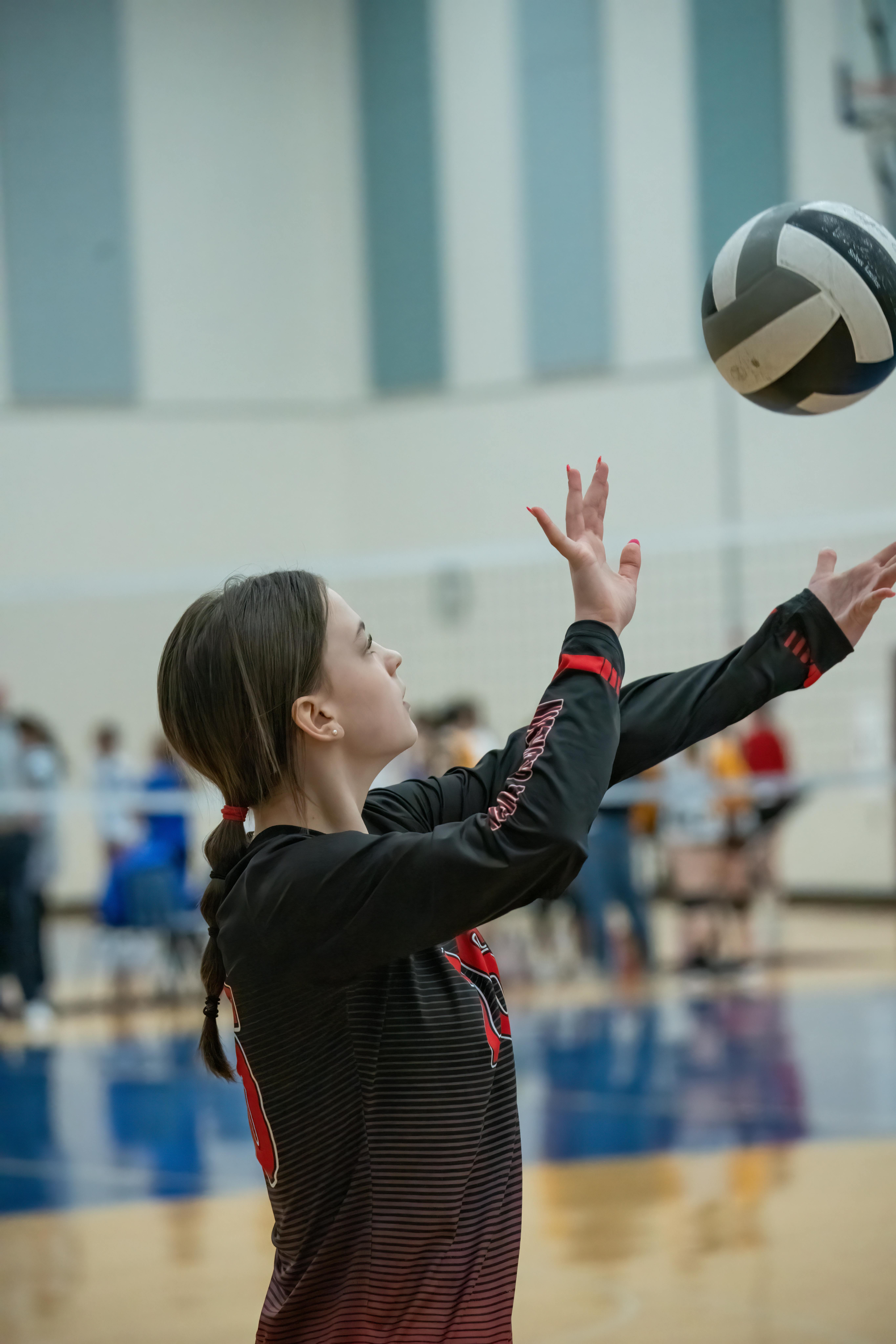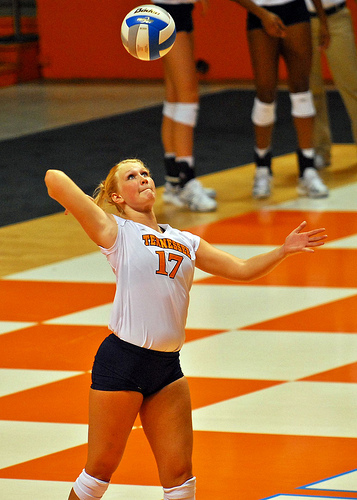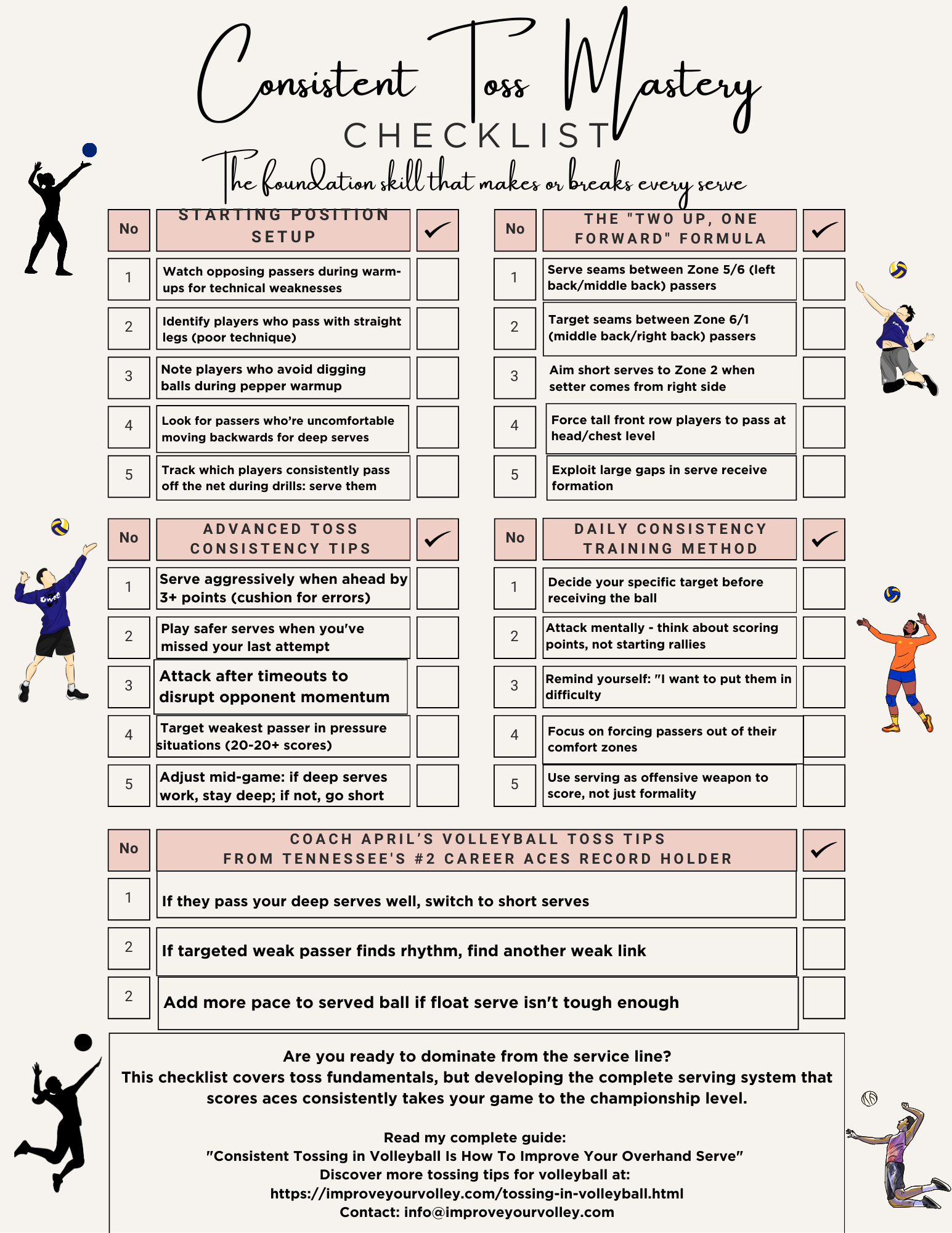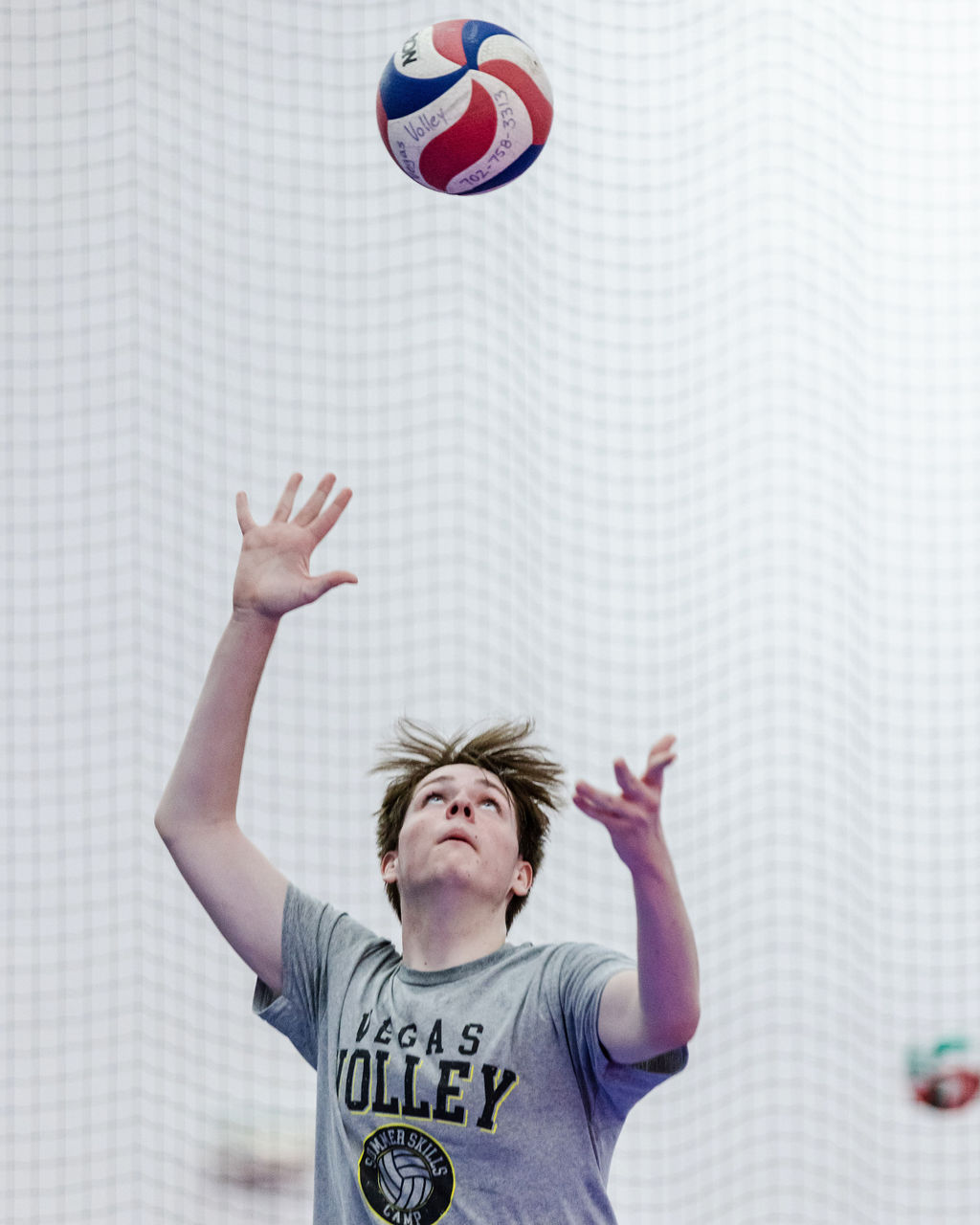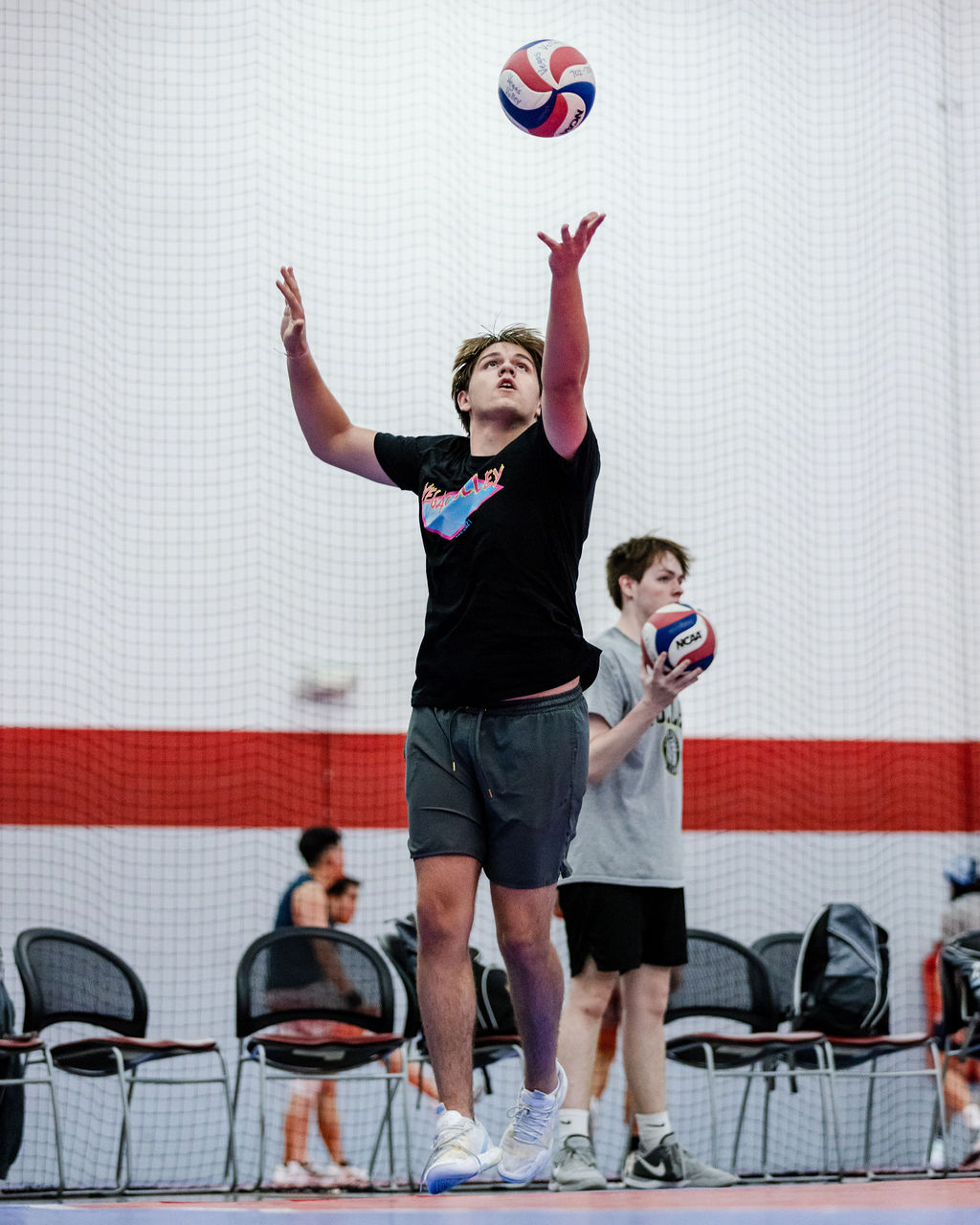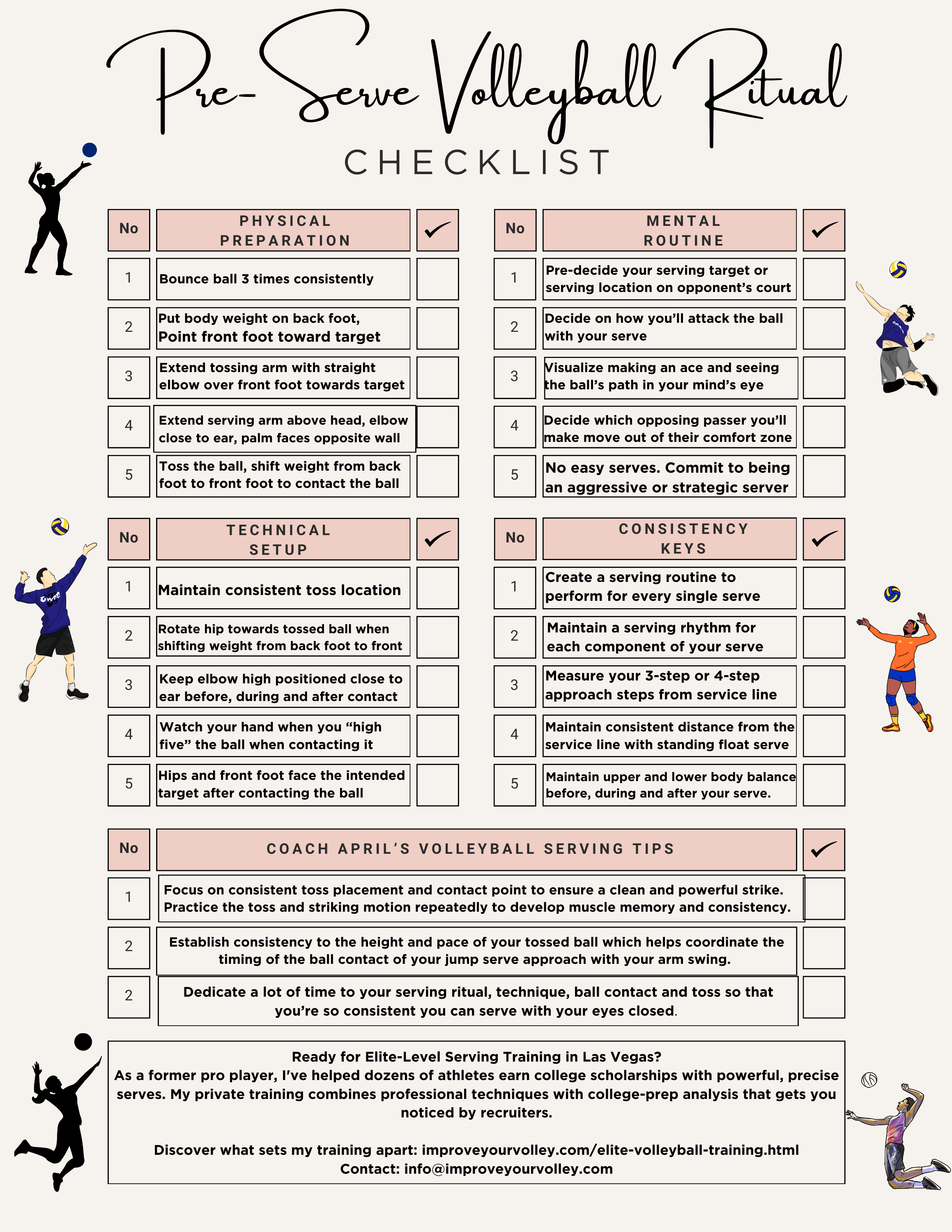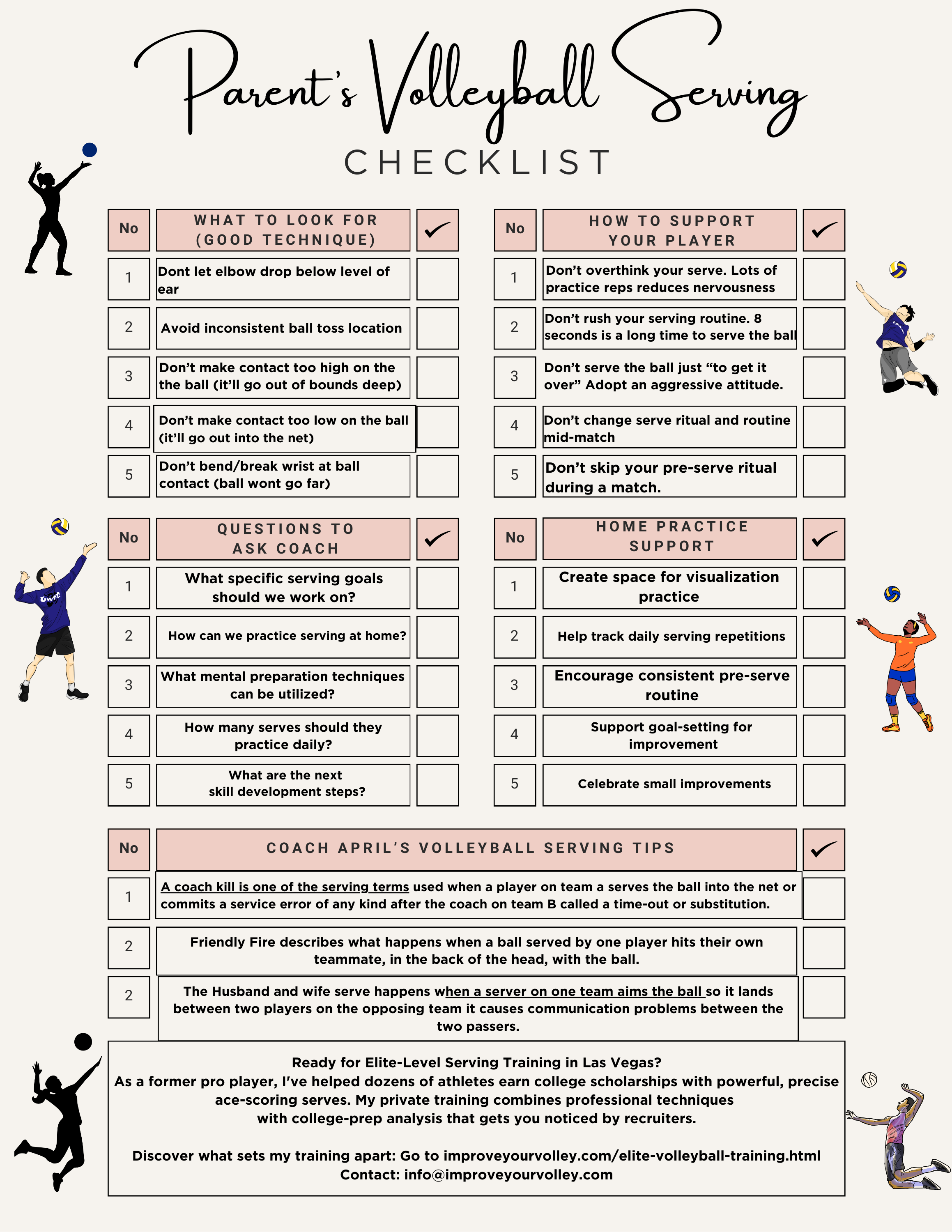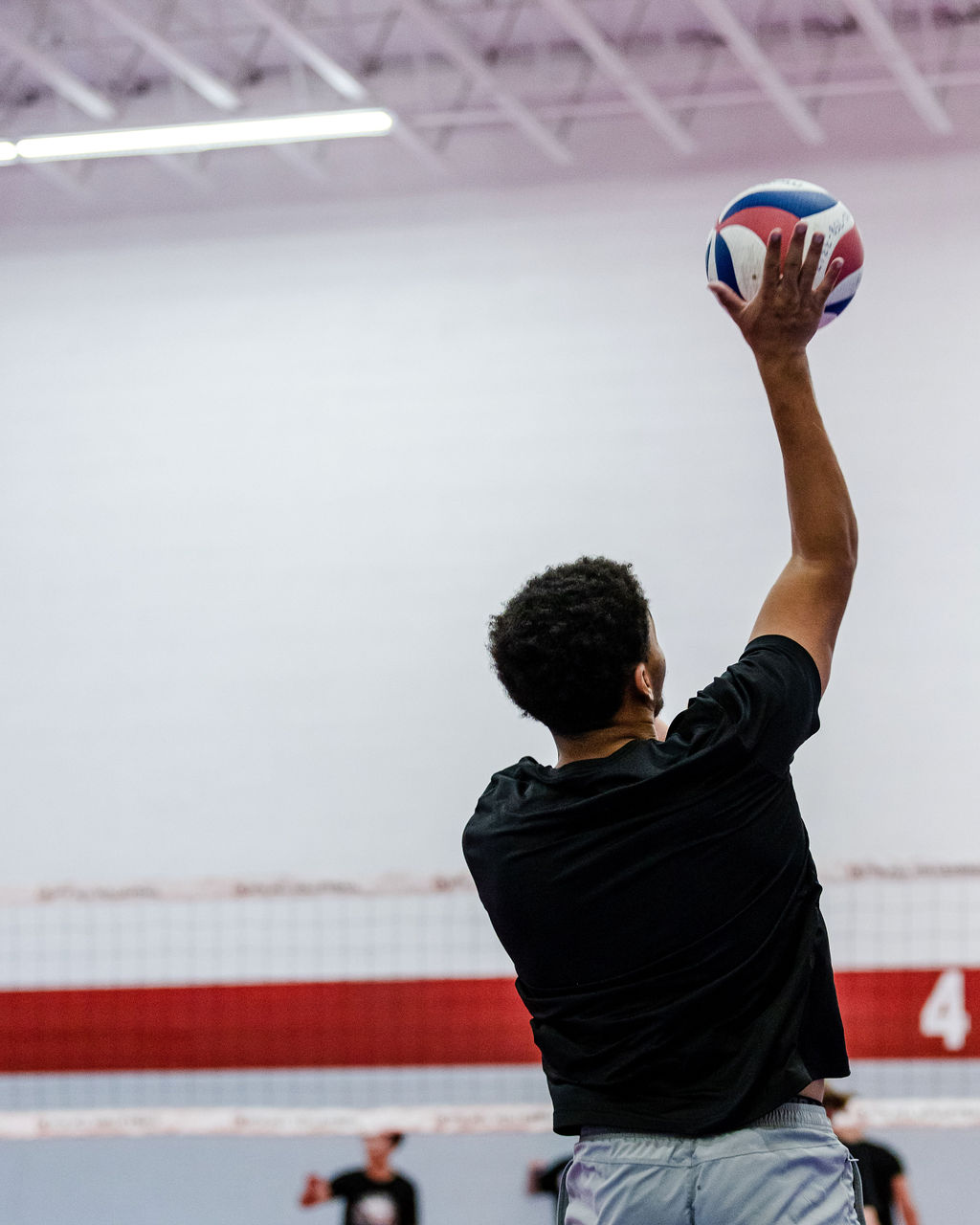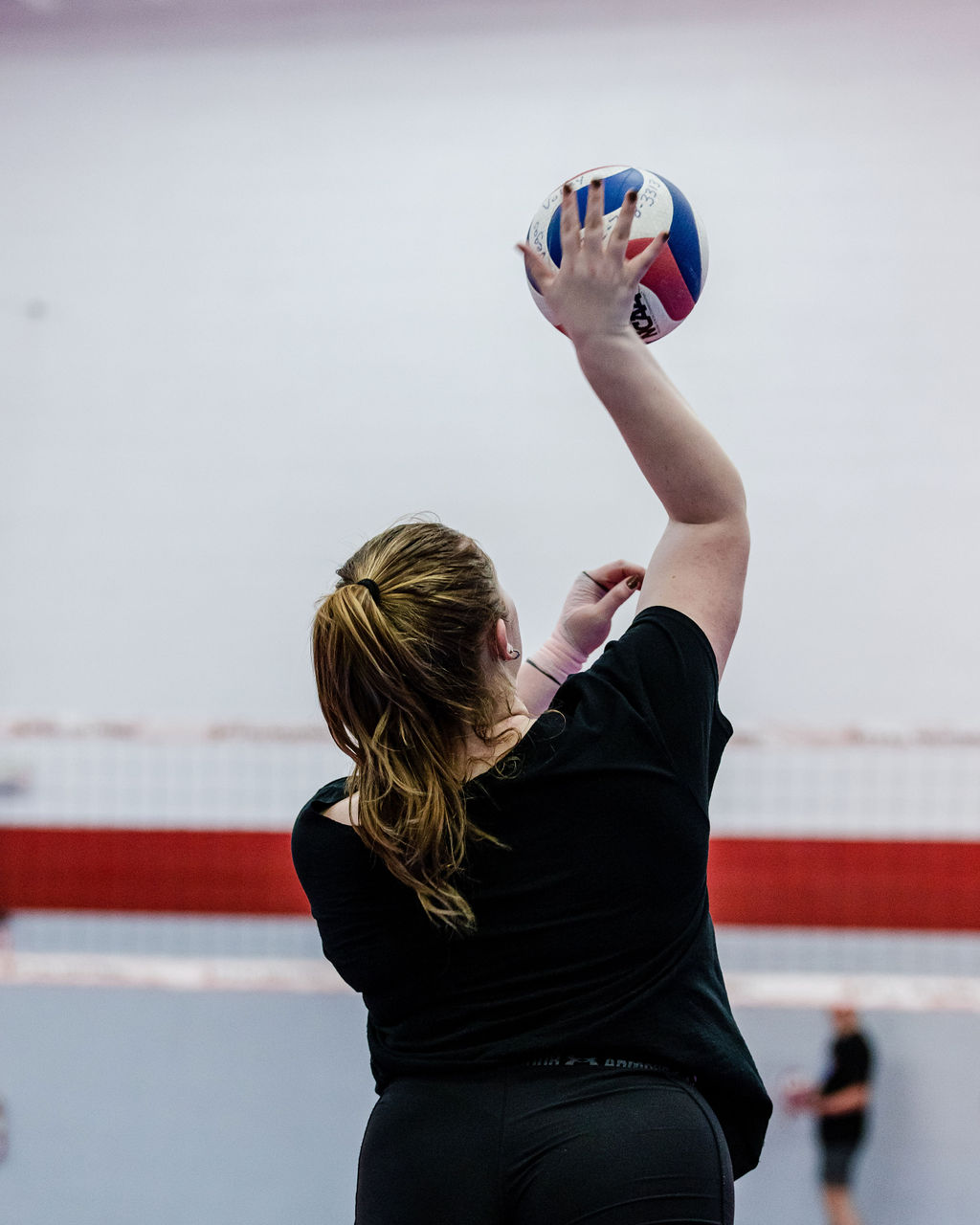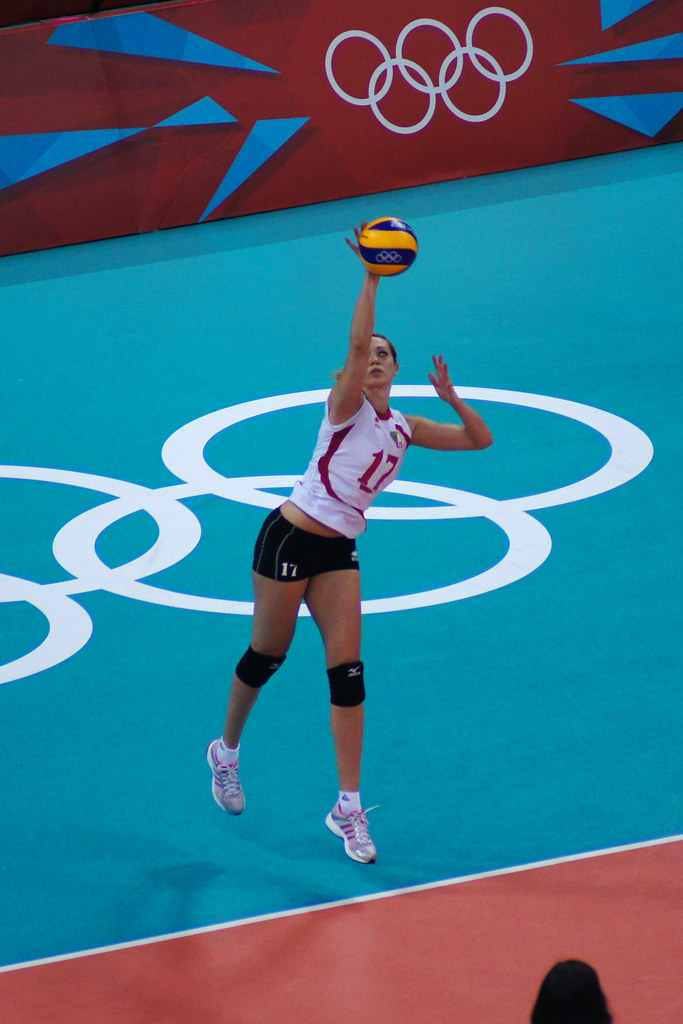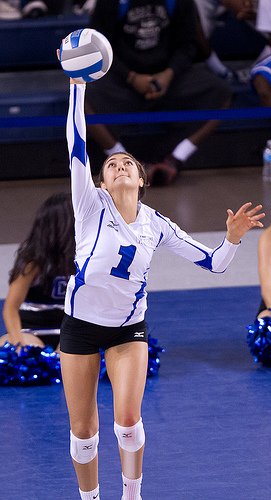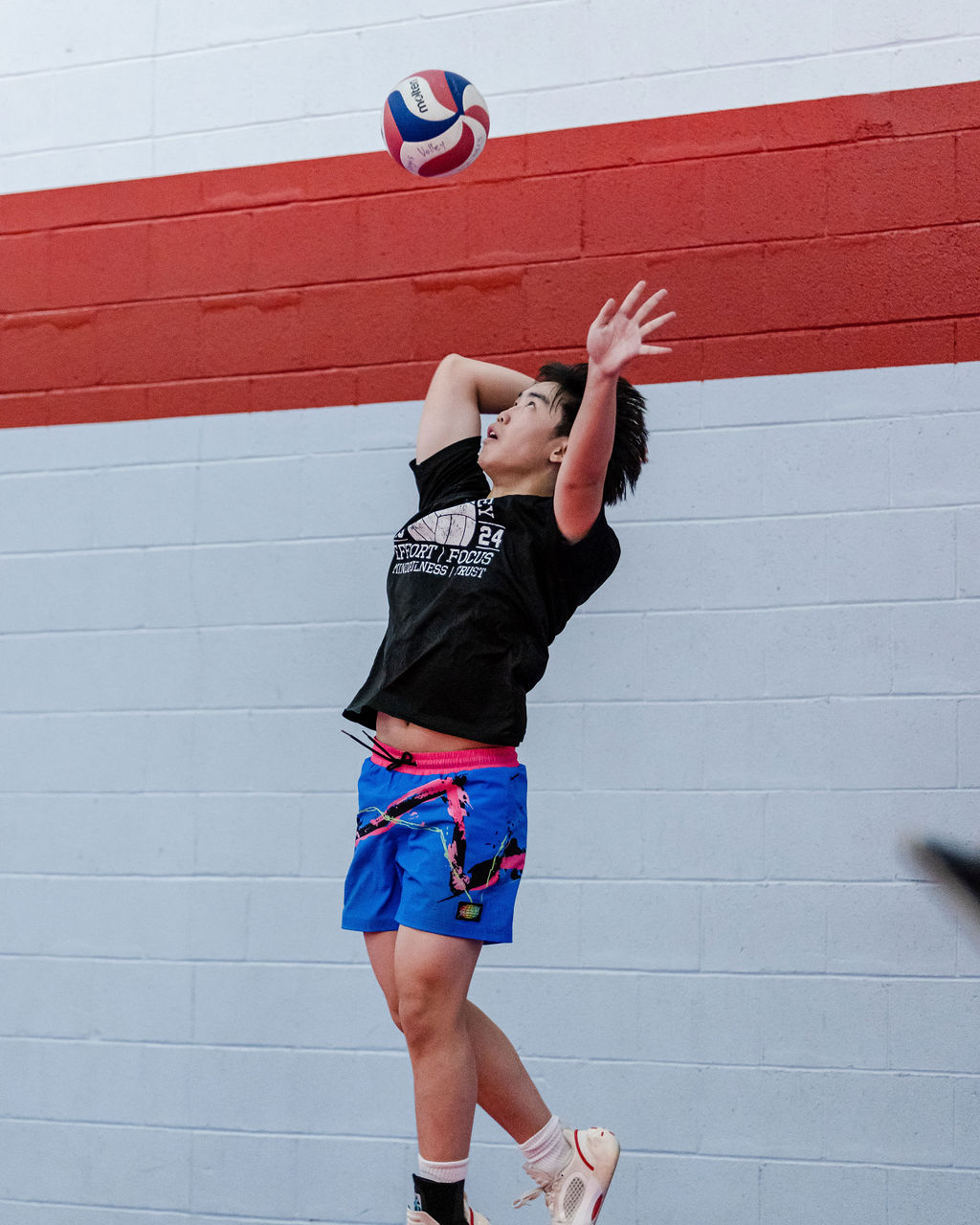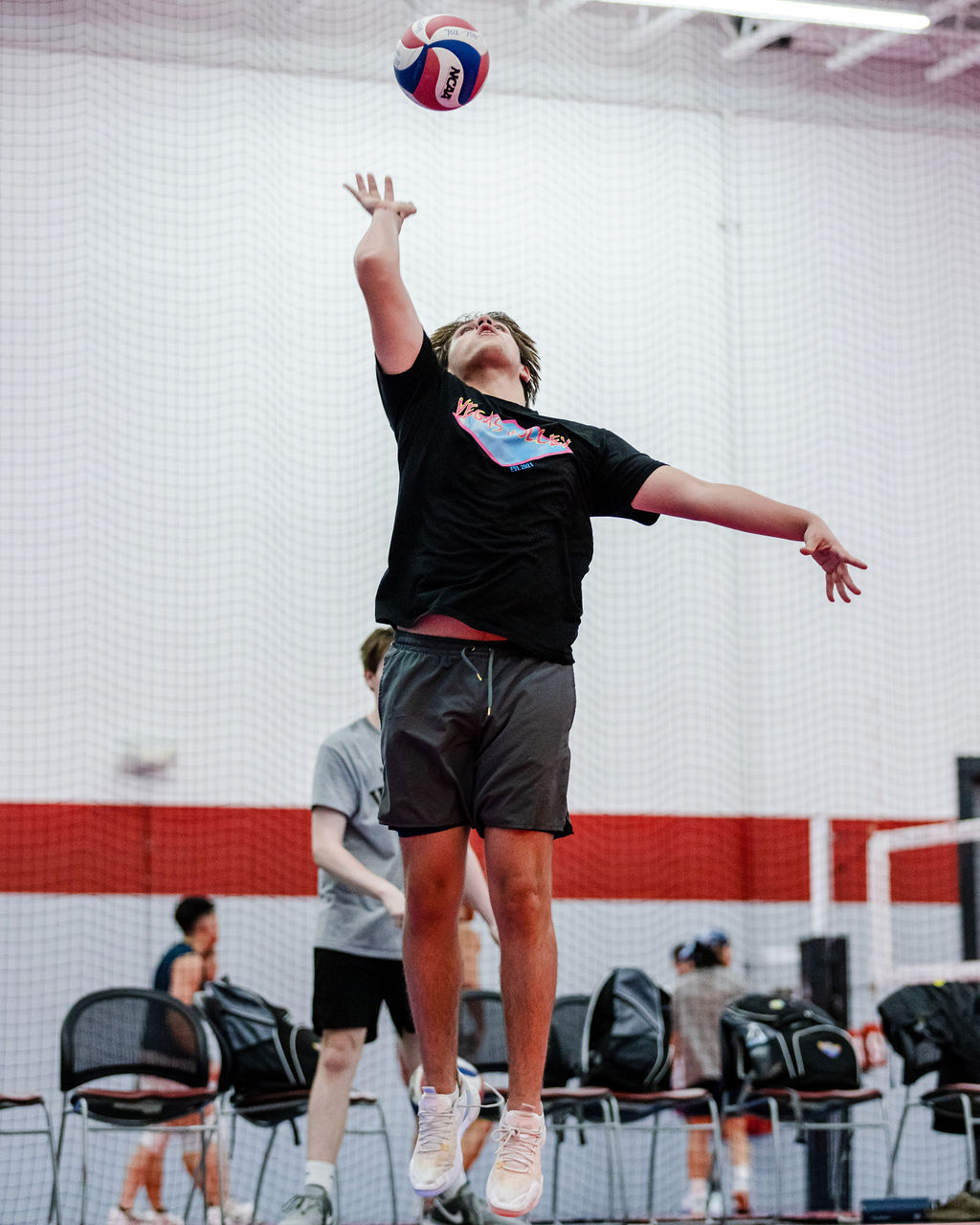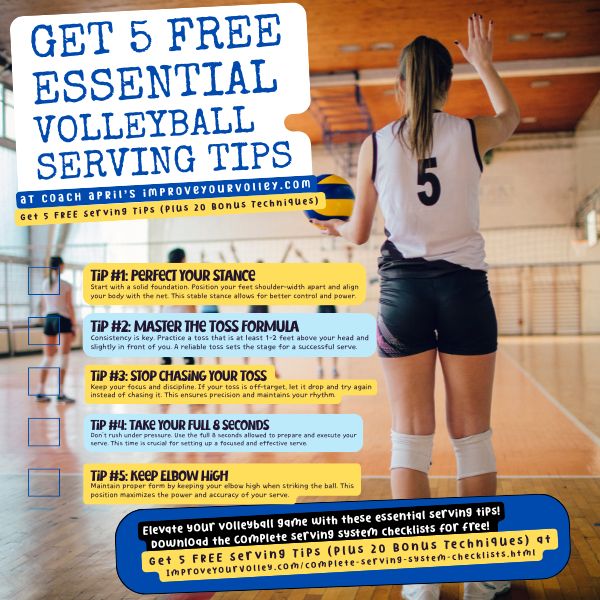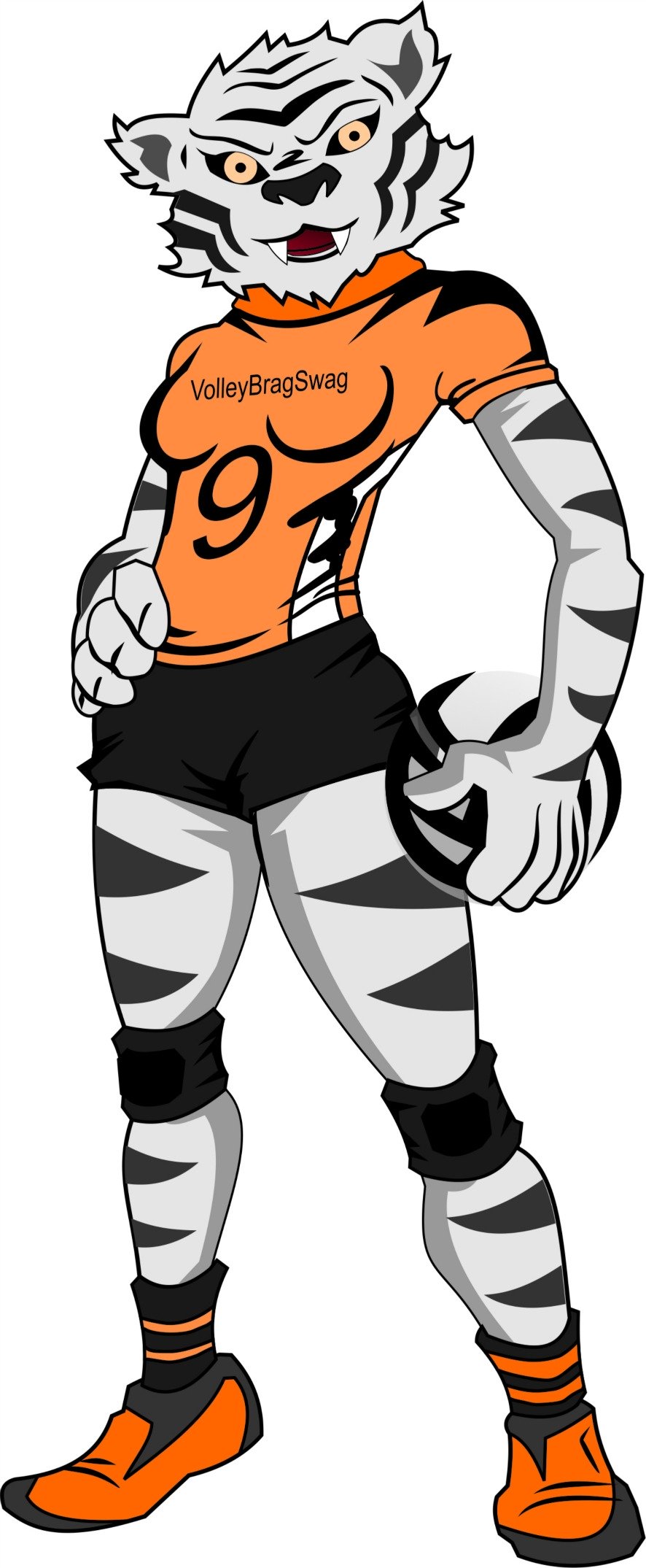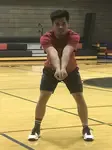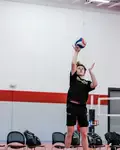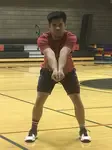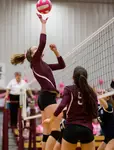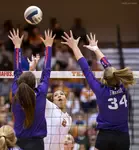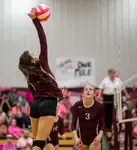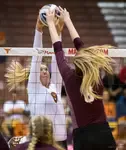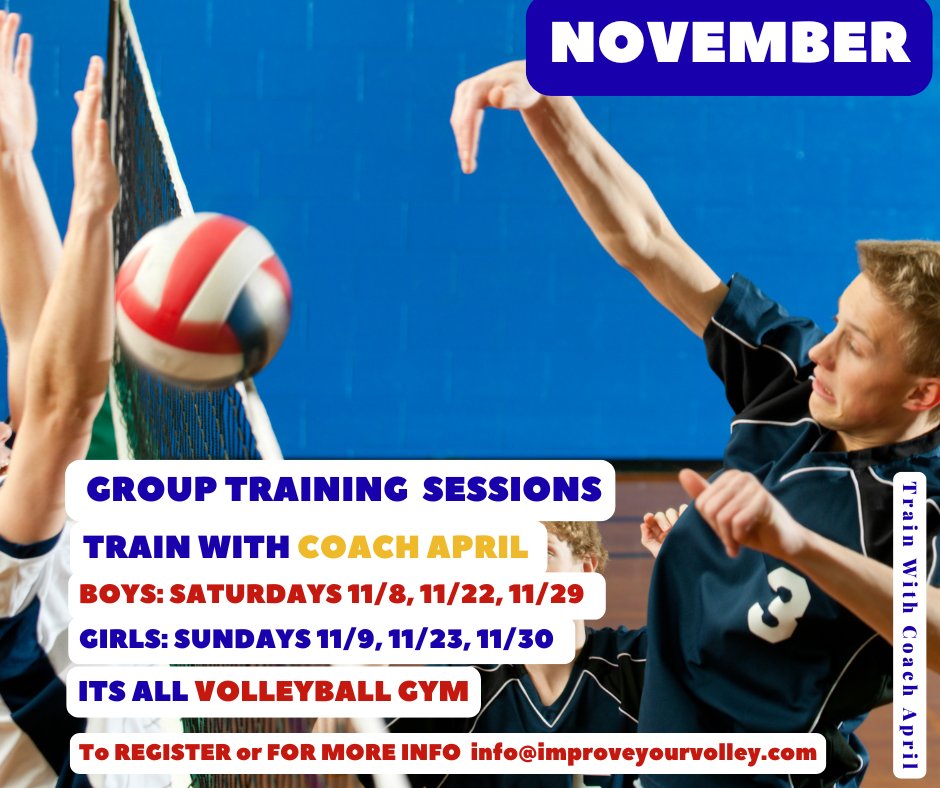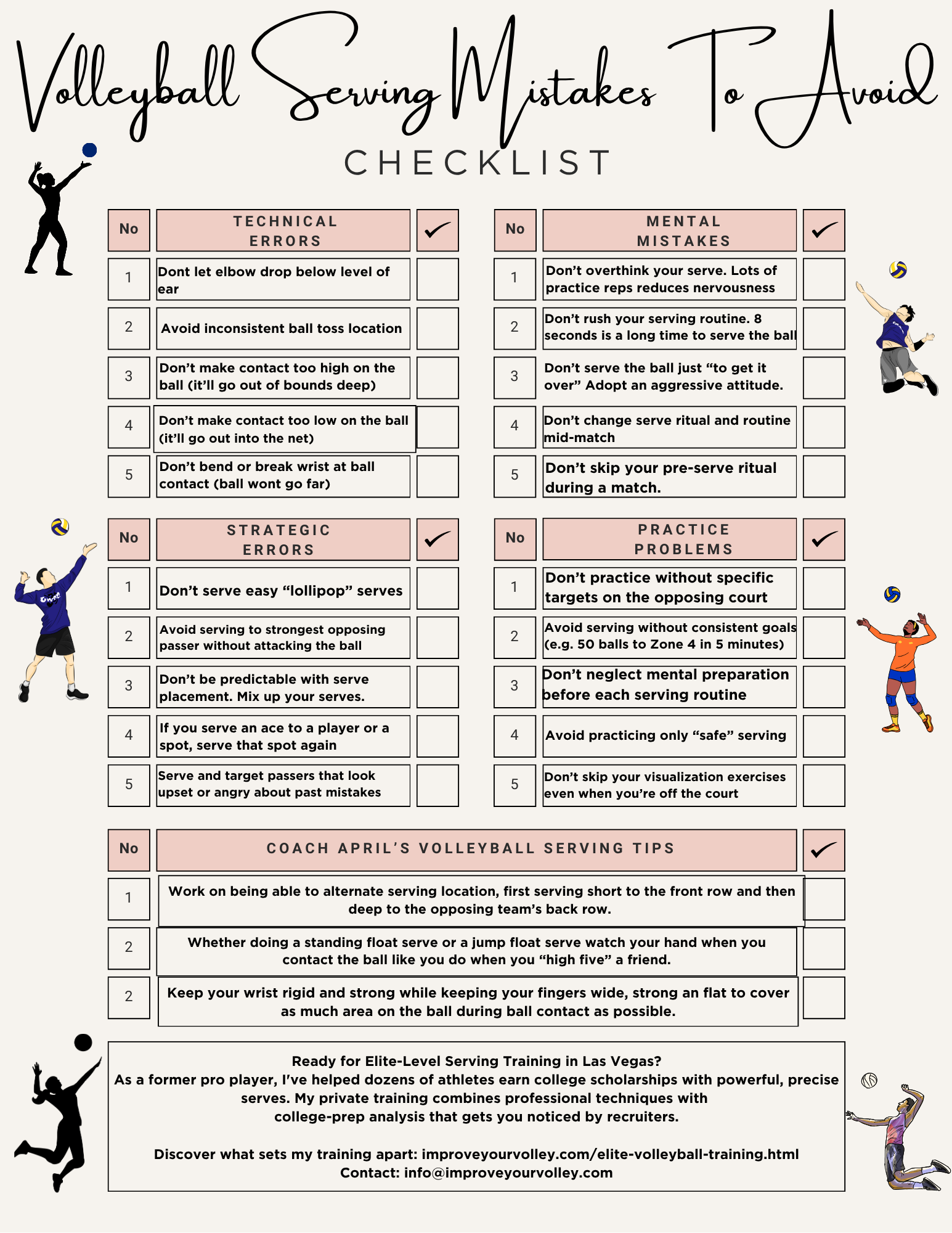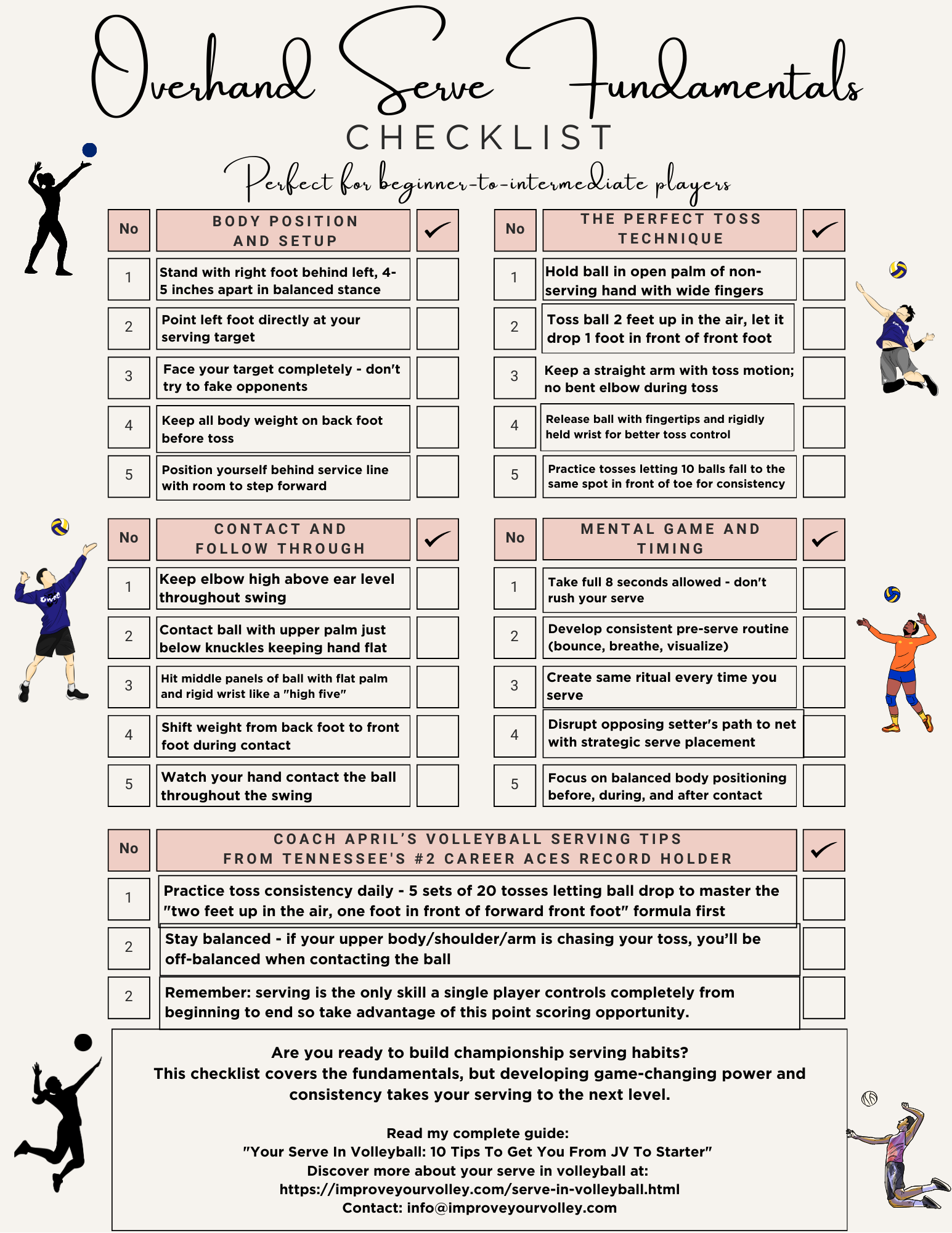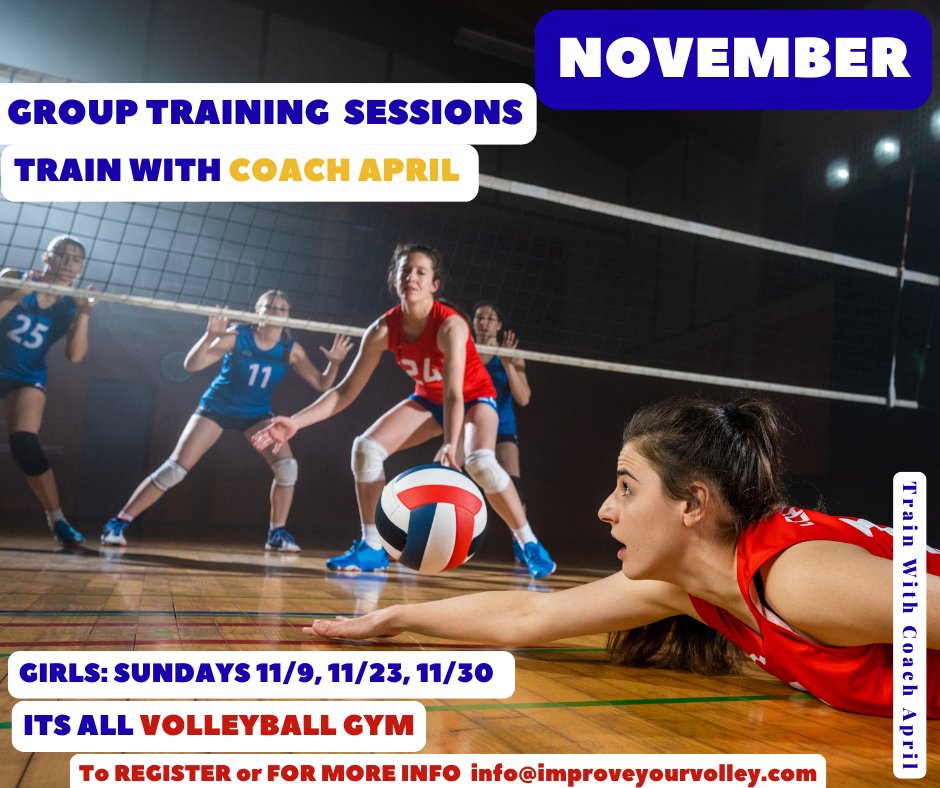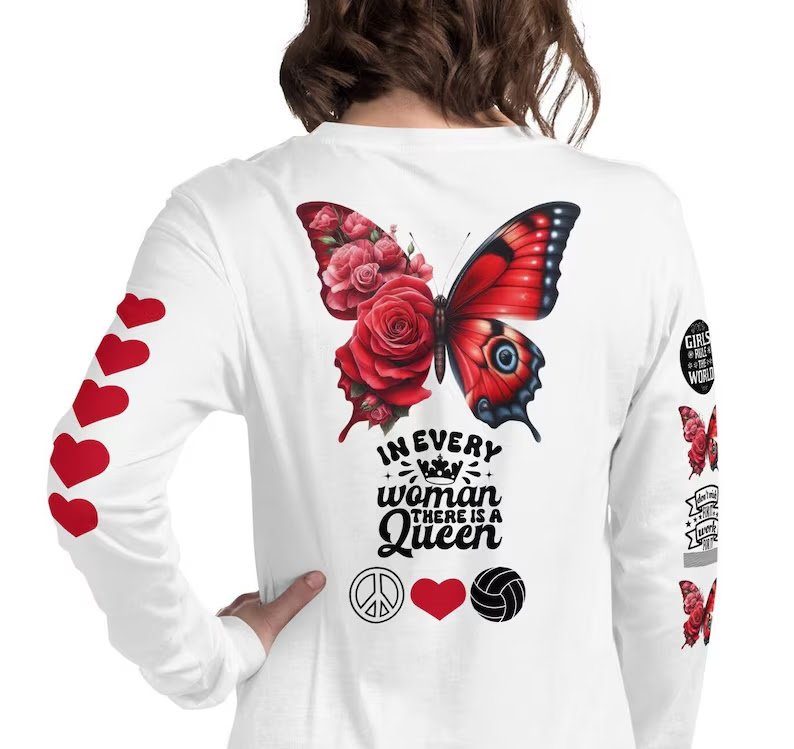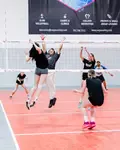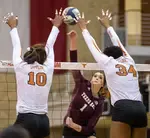- Improve Your Volleyball with Coach April
- Learn How To Coach Girls Volleyball
- How To Serve A Floater
How to Serve A Floater Known As The Standing Float Serve in Volleyball
Learn how to serve a floater, also called a standing float serve that's hard for the opposing team to pass because of how the ball floats while crossing the net.
Here's a step by step float serve tutorial on how to get the ball to your intended target on the opposing team's court.
How To Serve a Floater
The Set Up
As a right handed server,
- line your body up to face your serving target
Your body will be parallel to the service line.
Whether you're serving to a court zone or directly to an opposing player...face your target. Let the player know...you're coming right at them with your serve.
Volleyball Serving Drills with Coach April: Watch how to serve a floater that lands close to or near the corners of the ten foot line in a timed drill that we do in Boot Camp classes.
How To Serve a Floater:
Know Where You're Going To Serve
The key is to know where you are going to serve before you serve, then turn and point your toe and your tossing arm, straight at your serving target.
How to Serve A Floater
Your Serving Arm Ready Position
Right Handed Serving Arm
- Raise your serving arm so its in a 90 degree angle with a bent elbow and open palmed hand, above the level of your right ear.
How To Serve a Floater
Keep your Elbow High
Attention to detail. Consistency. Focus-Driven Work. 🏐
These are the processes that we preach to our SQUAD every practice.
We believe in quality of repetition over quantity.
We teach our athletes to be disciplined and process oriented.
Because it’s the little things that set apart the average from the great.
If you can’t win the serve you can’t win the point.
While there is a time that we work on tops spins and developing power to drill down our opponent in our serves, we also emphasize with our boys that the most dangerous weapon is consistency.
Master the basics first. Only then will you open the door to new tools and possibilities.
Many servers have problems serving over the net because they drop their elbow during their serving swing in an attempt to shot put the ball over the net
Keep your elbow above the level of your ear!
How To Serve a Floater
The Palm of Your Serving Arm Should Face The Opposite Wall
- The palm of your serving hand should be facing the opposite wall, not turned up at the ceiling.
- Keep a flat palm with fingers spread wide, as if you are about to give a teammate a high five.
- Your flat hand should be as flat as a ping paddle.
The Float Serve Starting Ready Position
When done correctly your starting arm position should look like the letter L.
For right handers the left hand is extended straight out in front with the ball resting in the palm of your left hand.
The right arm is straight up with elbow close to ear and palm of your hand facing the opposite wall.
How To Serve a Floater
Feet Are Shaped Like an L with
Weight On Back Leg
Feet and Leg Positioning
Feet and legs are in a comfortable balanced position, shoulder width apart with the weight of your body on your back leg.
Your front toe should point to the target or location you're about to serve.
Watch as semi private training client Brooklyn demonstrates hand position for the jump float serve...
- her hand is kept as flat as a ping pong paddle
- the middle of her hand contacts the middle of the ball
- her elbow remains high, above the level of her ear, from start to finish of her approach
How To Serve a Floater
Start and Finish in a Balanced Body Position
The key is to make sure your body isn't tilted or leaning to one side.
Be balanced!
When you turn your hips and shoulder to contact the ball there's no need to add additional steps, or bounces, dips or wind ups.
How To Serve a Floater
The Toss
Click to Download Your Consistent Toss Mastery Checklist pdf:
🎯Consistent Toss Mastery Guide - $7
Are inconsistent tosses sabotaging your serves and forcing you to chase the ball? Why fight your toss when you could master the foundation of every great serve?
The key is to keep your toss so consistent, that if you toss the ball ten times in a row and let it fall to the ground, it goes up the same height and comes down in the same spot every single time.
The Toss
- The toss done with the left extended nearly straight arm lifts the ball up and releases it, two feet in the air and if dropped, lands one foot in front of your front left foot. These requirements keep the toss in front of your serving arm.
The key is to keep your toss so consistent, that if you toss the ball ten times in a row and let it fall to the ground, it goes up the same height and comes down in the same spot every single time.
2-3 feet in the air gives your serving arm, time to keep your elbow high during your serving swing motion.
You have time to get the open palmed hand to the ball without dropping the elbow, or bending your wrist, or adding funky shoulder movement that doesn't help you serve.
Click to Download Your Pre Serving Ritual Mastery Checklist pdf:
🎯Volleyball Pre Serving Ritual Guide - $7
Transform Your Serve from Weak to Weapon
Stop letting pressure situations destroy your serves?
You'll Get
- ✓3-bounce physical preparation setup system
- ✓Mental routine for target pre-selection and visualization
- ✓Technical execution checklist for automatic consistency
- ✓Proven tips for bulletproof toss consistency
- ✓Pressure-proof strategies that eliminate serving errors
Click to Download Your Consistent Toss Mastery Checklist pdf:
🎯Consistent Toss Mastery Guide - $7
Are inconsistent tosses sabotaging your serves and forcing you to chase the ball? Why fight your toss when you could master the foundation of every great serve?
Click to Download Your Parent's Volleyball Serving Guide Help Your Player Develop Championship Serves (Even If You've Never Played) Checklist pdf:
🎯Parent's Volleyball Serving Guide Help Your Player Develop Championship Serves Guide - $7
You'll Get:
✓Learn exactly what to look for in your player's serving form so you can provide meaningful feedback.
✓Discover how to provide encouragement that actually improves performance and mental toughness.
✓Know exactly what to ask coaches to show you're engaged and help your player develop properly.
✓Simple, effective drills that don't require a gym or expensive equipment.
✓Understand the language coaches use so you can better support your player's development.
✓Help your player develop the psychological aspects of serving that many coaches don't have time to address.
When you look at my players you'll see (or should see) that all of them have the same serving form and technique. We work hard on -
- keeping the elbow close to the ear
- watching their hand when they contact the ball
- watch how their hips are facing where they want to serve the ball (we were working on serving line to zone 5)
- all of them are or will contact the ball at the same spot on the ball, so the upper part of the palm just below the knuckles contact the middle panels of the ball
- working on a consistent toss on every serve so they know exactly where to contact the ball
How To Serve a Floater
Contacting The Ball
Contact the Ball - Hip Swivel and High Five Hand Turn at the Same Time
- After you toss the ball, you swivel your left hip making a quarter turn forward towards the net, at the same time you bring your right arm forward, keeping your elbow high above the level of your ear.
How To Serve a Floater
Creating the "Float Effect"
The key is to swivel the hip and and shoulder together bringing the serving hand forward at the same time to contact the middle panels of the ball.
Your hip comes forward at the same time the shoulder does which also brings the hand forward, while keeping the elbow above the level of the ear.
How To Serve a Floater
High Five The Ball When Making Contact
Contact the Ball - High Five the Ball
The key is to keep a very wide fingered, flat palmed hand and make contact with the ball with the middle of your hand, without bending your wrist.
Do exactly what you'd do if you were 'high fiving' a teammate.
Looking to fine tune your top spins and dominate on the court? 🏐
Group Training Classes with Coach April is EVERY MONDAY in October.
Join Coach April for focused, small-group training to help you fine tune the little things you have been struggling with.
Details:
🗓️ Mondays: Oct 6, 13, 20 & 27
⏰ 5:00 - 6:00 PM
📍Las Vegas Basketball Center
➡️ Register at SQUADVBC.COM
(login to your SQUAD account first)
📧 Email us at info@thesquadvolleyballclub.com for any questions you may have!
Reach "high five" high and keep your hand "high five" flat.
The ball will float and dip and be very difficult for a passer to track and pass the ball because of your ability to contact the ball with no follow through, no spin and with a flat palmed, wide fingered "high five" contact.
How To Serve a Floater
Watch Your Hand When Contacting The Ball
Contact the Ball - Watch the Ball
- Watch your hand contact the middle of the ball
In the picture above my 18s Vegas Volley boys players Noah and Calvin both have their eyes on the ball as they serve, watching where their hand is contacting the ball during their float serve contact technique.
Now, you should be ready to score aces now that your know how to serve a floater!
Ready to Conquer Your Serving Skills Completely?
This article covered a number of tips for how to serve a floater, but if you want a complete systematic approach to serving excellence, check out:
🎯 FREE: 5 Essential Serving Tips Checklist
Perfect for beginners learning proper technique:
- Perfect stance positioning
- The "Two Up, One Forward" toss formula
- Mental approach techniques
- Plus 2 more essential tips
🏆 COMPLETE SYSTEM: 9 Serving Checklists
Ready to go from beginner to elite server?
Get the complete system:
- 180+ detailed checkpoints Foundation → Development
- Advanced progression
- Jump float serve mastery
- Tactical serving strategies
- Ace-scoring systems
📚 MORE SERVING RESOURCES:
Explore all my serving articles:
Read the Essential Serving Tips guide
Meet Tatoo the Tiger, Serving Specialist on VolleyBragSwag's All Beast Team
If your athlete struggles with consistent serve receive, gets subbed out, or is overlooked for playing time—this is the fix you’ve been looking for.

Struggling with passing consistency?
I help talented passers tired of getting pulled from games because of inconsistent serve receive skills BUILD passing confidence without expensive private lessons using the same 3-step system that's helped dozens of my athletes get recruited.
Download my eBook for $17.99 and start building the passing confidence that keeps you on the court—and gets you seen by college coaches.
From Lady Vol to Legend: Coach April Produces Powerful Passionate Players...is that you?
What Are You Looking For?
Click to Download Your Pre Serving Ritual Mastery Checklist pdf:
🎯Volleyball Pre Serving Ritual Guide -
Players! Learn How To Transform Your Serve from Weak to Weapon
Click to Download Your Parent's Volleyball Serving Checklist pdf
🎯Parent's Volleyball Serving Checklist Guide
Parents! Help Your Player Develop Championship Serves (Even If You've Never Played)

Hi there!
Thanks for stopping by. Hope you learned something today that will help you reach your volleyball goals.
Be sure to subscribe to my email newsletter so you can learn more each week!
Stay strong! Stay motivated!
-Coach April

SUSCRIBE to my email newsletter below!
 Click to learn more about the weekly volleyball classes and clinics or email info@imrpoveyourvolley.com for information
Click to learn more about the weekly volleyball classes and clinics or email info@imrpoveyourvolley.com for informationCongratulations to my seven Boys-18s Vegas Volley club players who played in two state championship finals yesterday, the 3A and 5A State champinship finals at Sunrise Mountain High School.
TOURNAMENT CHAMPIONS!
A-1 Vegas Volley VBC
In It To Win It Tournament
May 2 - 4, 2025 Tournament
Gold Medalists
18s Premier Division
Vegas Volleyball's Unsung Heroes: Celebrating Moms with Peace Love Volleyball Shirts
Ready to energize your volleyball mom journey?
Subscribe to my 'Producing Powerful Passionate Peaceful Players' email list above on ImproveYourVolley.com.
You'll receive energy-boosting tips, exclusive insights from me, Coach April Chapple on maintaining momentum in volleyball.
Let's power up the Vegas volleyball scene together!
Recent Articles
-
Tips For Short Volleyball Players: Top Strategies to Beat Big Blockers
Jan 11, 26 11:00 PM
You don't need to be 6 feet tall to dominate at the net. Learn my tips for short volleyball players to use to outsmart bigger blockers and score more points. -
Essential Skills for a Hitter in Volleyball: Tips For Short Attackers
Jan 11, 26 07:05 AM
A short hitter in volleyball can aim the ball for the seam of the block to score since its harder for defenders to block at the net or dig up in the back row. -
10 Hitting Tactics Short Volleyball Players Use Against Big Blockers
Jan 11, 26 06:57 AM
These are 10 hitting tactics that short volleyball players, can rely on hit against and sideout and score against teams with big blockers in the front row.
